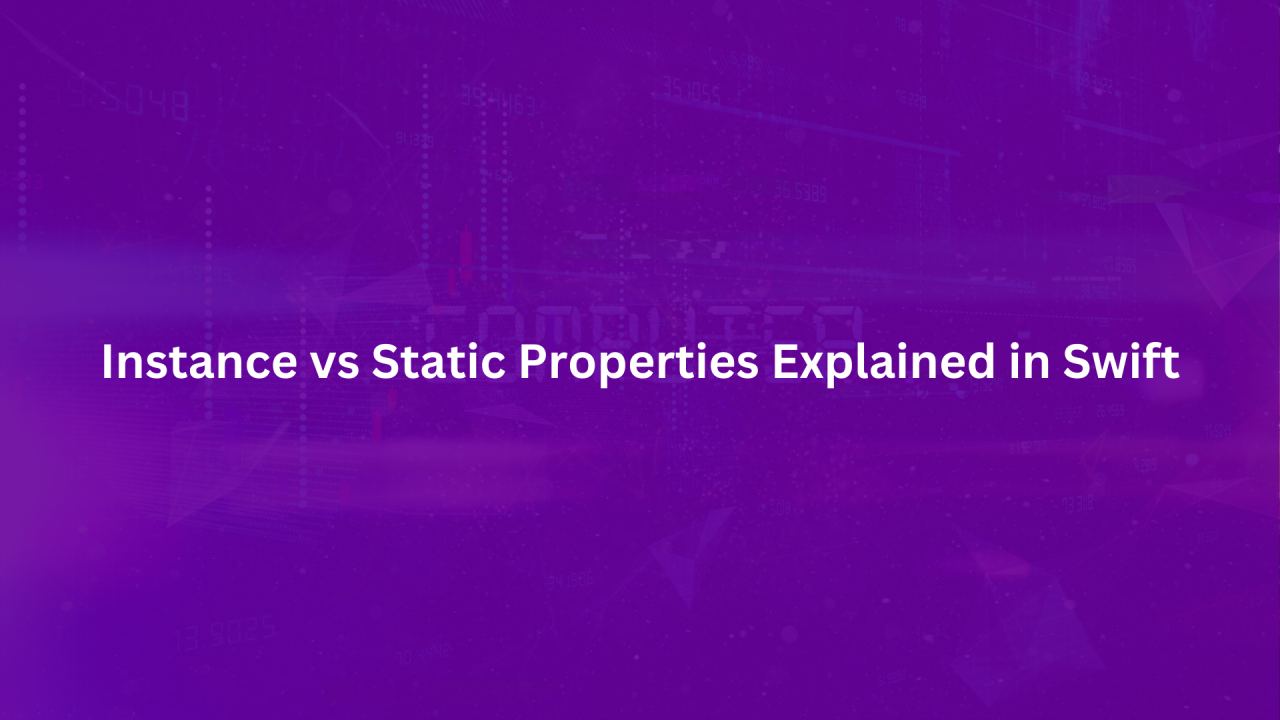
Instance vs Static Properties Explained in Swift
In Swift, a property is a variable or constant declared at the top level of an object such as a class, structure or enumeration.
A property is only visible through the object. If the object has a method then the method can see and access the property either by using the dot notation with the self keyword or omitting the self altogether except in situations of ambiguity.
class User {
let name = "Ijeoma"
func printUserName() {
print(self.name)
}
}
let myUser = User()
myUser.printUserName()
// Ijeoma
Here, the User class has a property named name and a function named printUserName that accesses the property through the dot notation using the self keyword.
The class is instantiated and the instance is assigned to the constant myUser. The dot notation is used to refer to printUserName() which prints the value, “Ijeoma.”
The property in this example is an instance property.
When properties store values associated with instances of a type, they are known as instance properties; and when they store values for the type itself, they are known as static properties.
Instance Properties
By default, an instance property is also visible to other code with access to its object. In such cases, the instance property can be accessed through the dot notation using the instance name (rather than self) as the reference.
class User {
let name = "Ijeoma"
func printUserName() {
print(self.name)
}
}
class Greet {
func greetUser() {
print("Hello, \(User().name)")
}
}
let greeting = Greet()
greeting.greetUser()
// Hello, Ijeoma
The greetUser() method of the Greet{...} object is accessing the name property of the User{...} object through the dot notation using the name of the object.
Greet{...} is initialized and assigned to the constant greeting. The dot notation is used to access the method greetUser().
领英推荐
Note: The values for instance properties can differ for each instance declared and its lifetime is determined by the lifetime of the instance. When an object is instantiated, its instance comes into existence and remains active as long as the variable or constant it is assigned to is being used by the program.
Static Properties
class User {
static let name = "Ijeoma"
}
print(User.name)
// Ijeoma
To declare a static property you use the keyword static and to access it you use the class name with the dot notation. There’s no need to instantiate the object because a static property is not associated with any instances, rather, it belongs to the object. This is the reason it’s also referred to as a type property.
The lifetime of a static property depends on the lifetime of the object. For example, if the object is declared at the top level of a file, then the object is active for the entire duration of the program and so is the static property.
Note: By default, static properties can be seen by any code that has access to its object and in such cases they can be referenced through the dot notation using the object name.
Instance vs Static Property
Instance properties are indeed more common but that doesn’t mean that static properties have no value.
A general rule I follow is to make the property an instance property if the object needs to be instantiated, otherwise, it’s static.